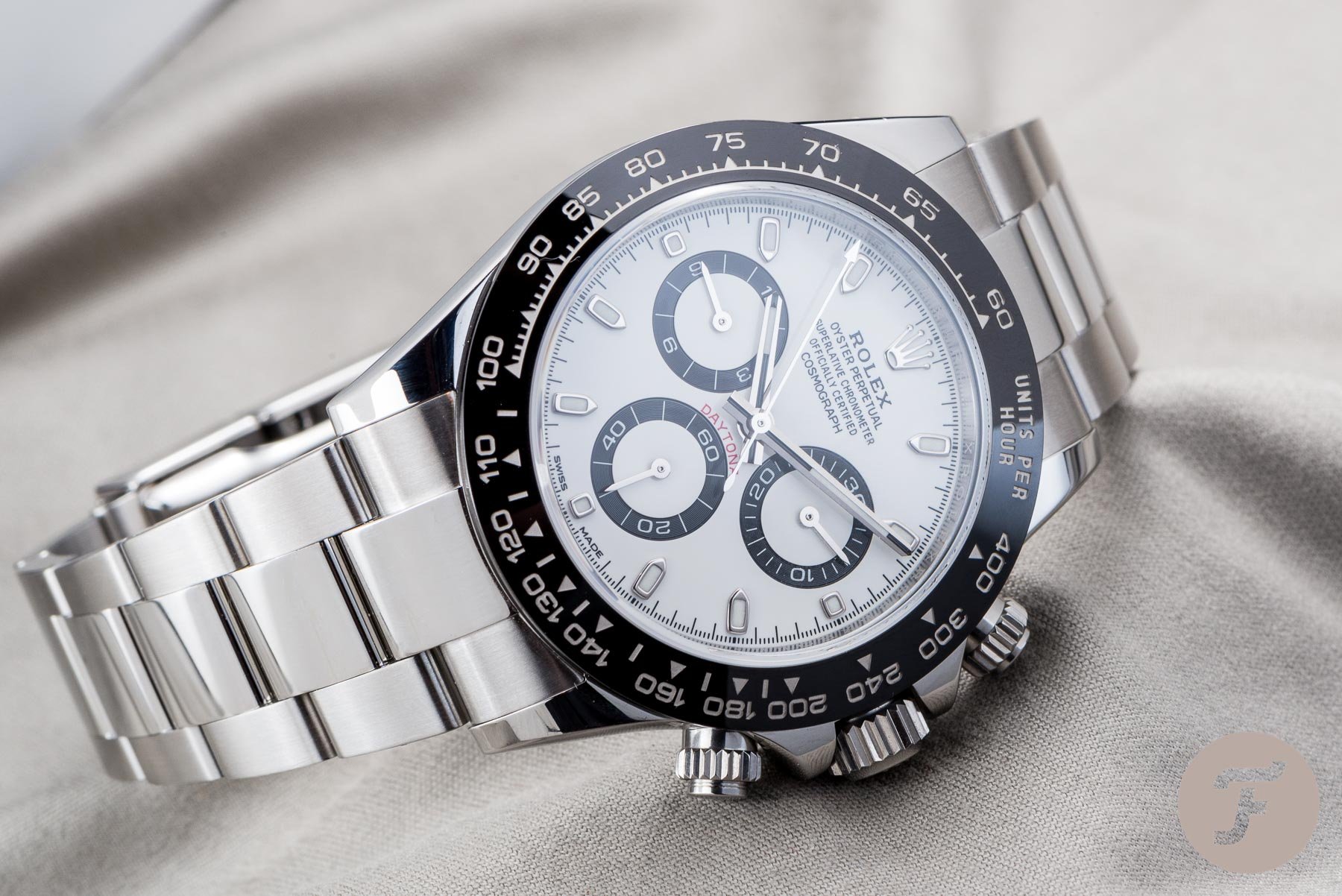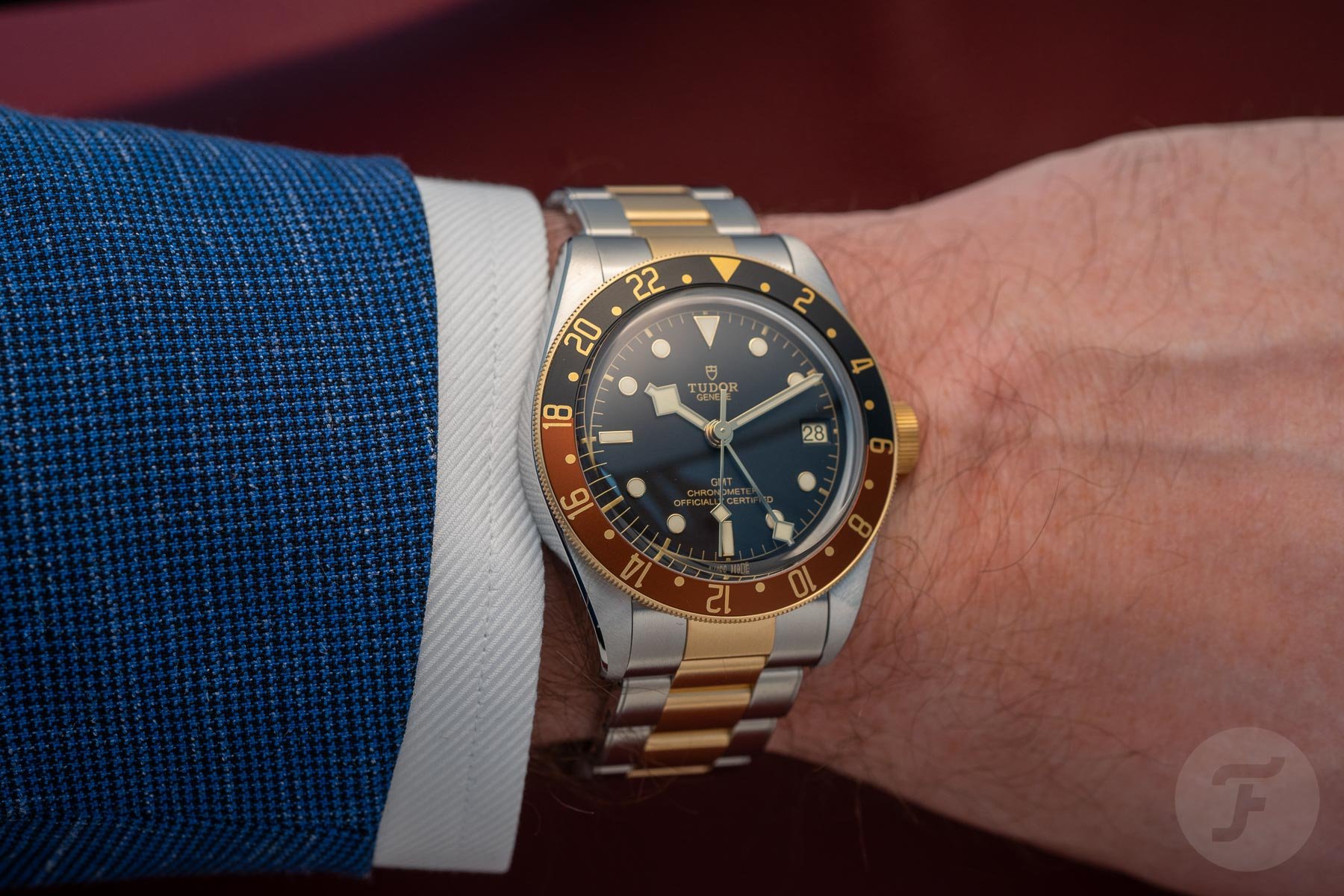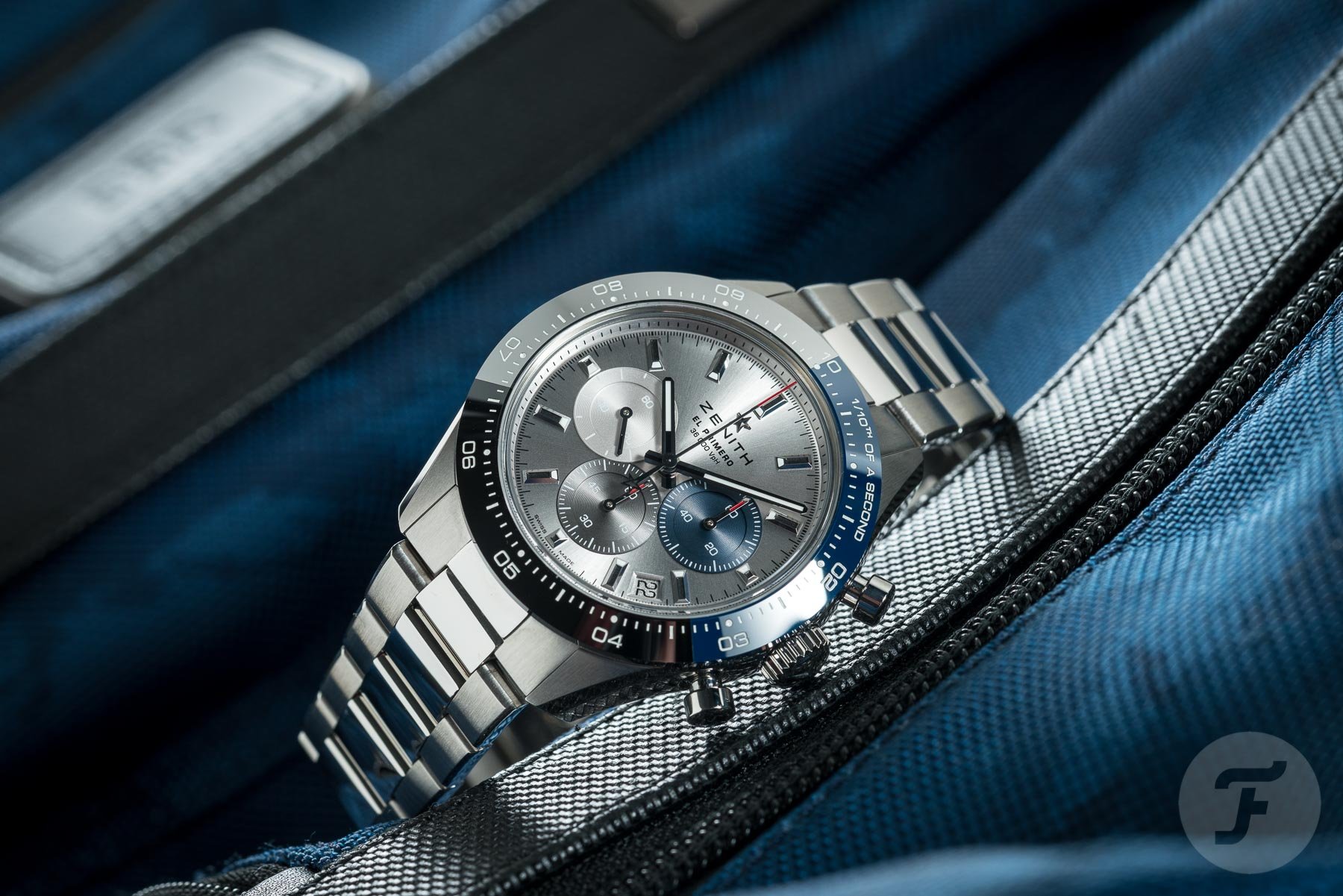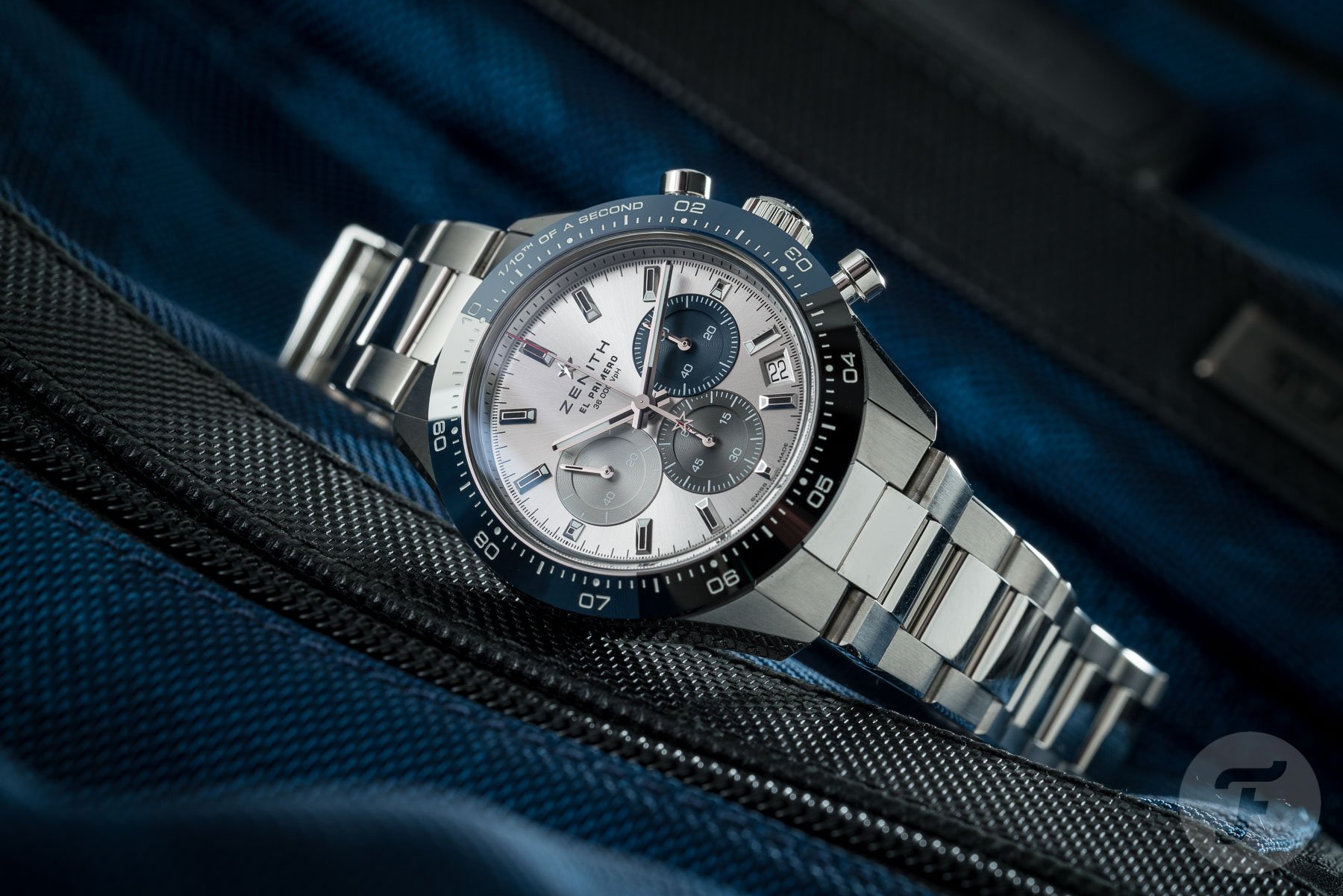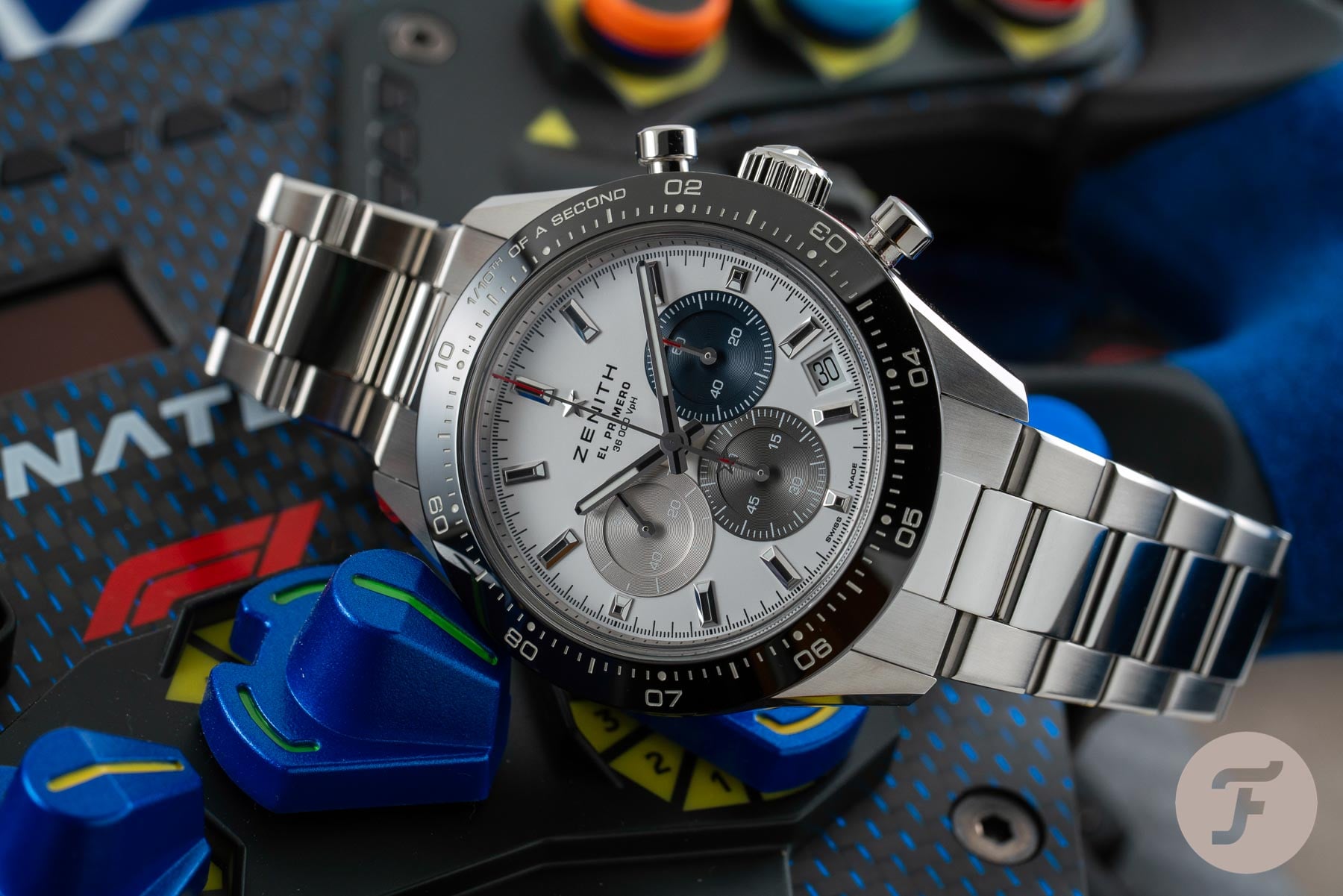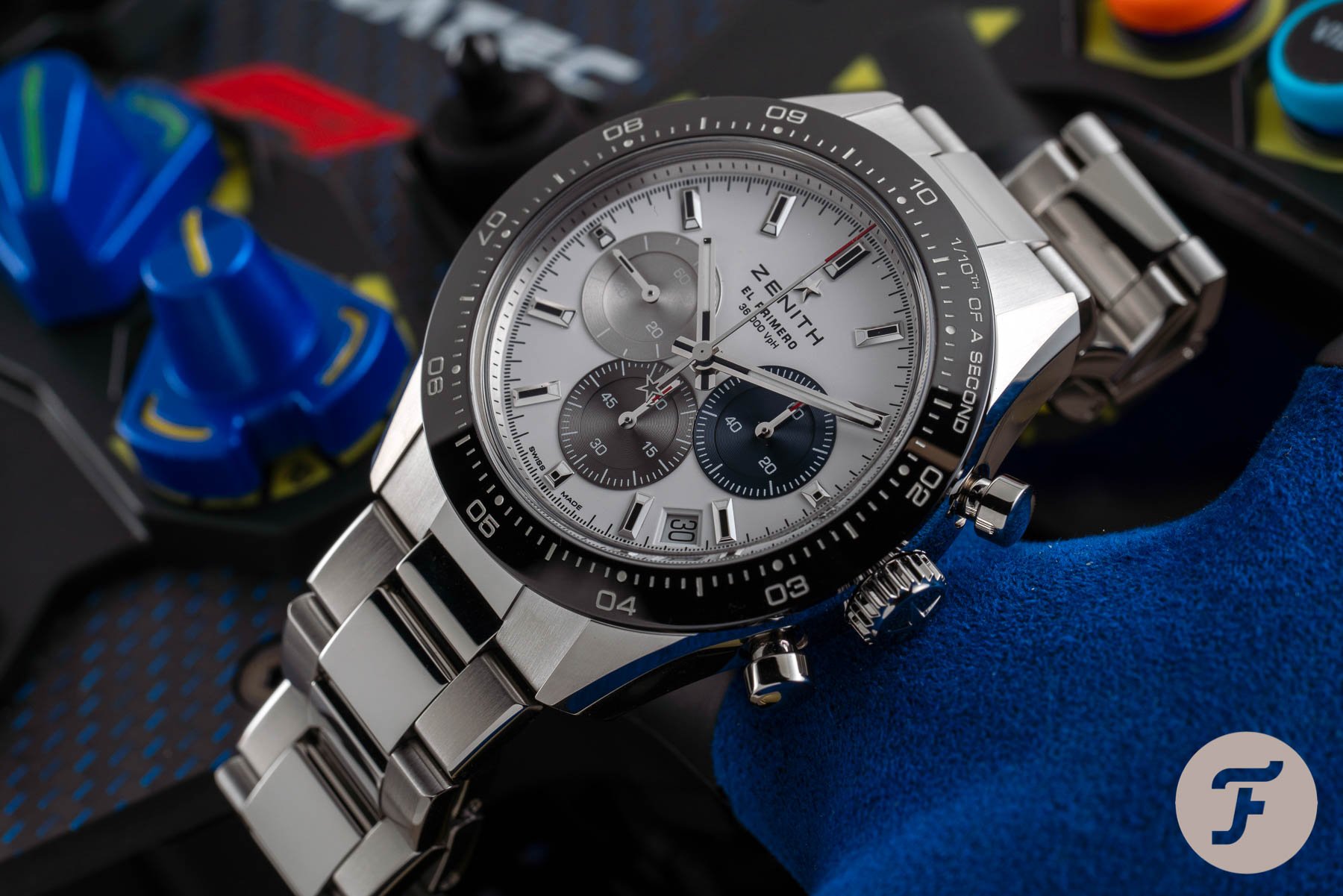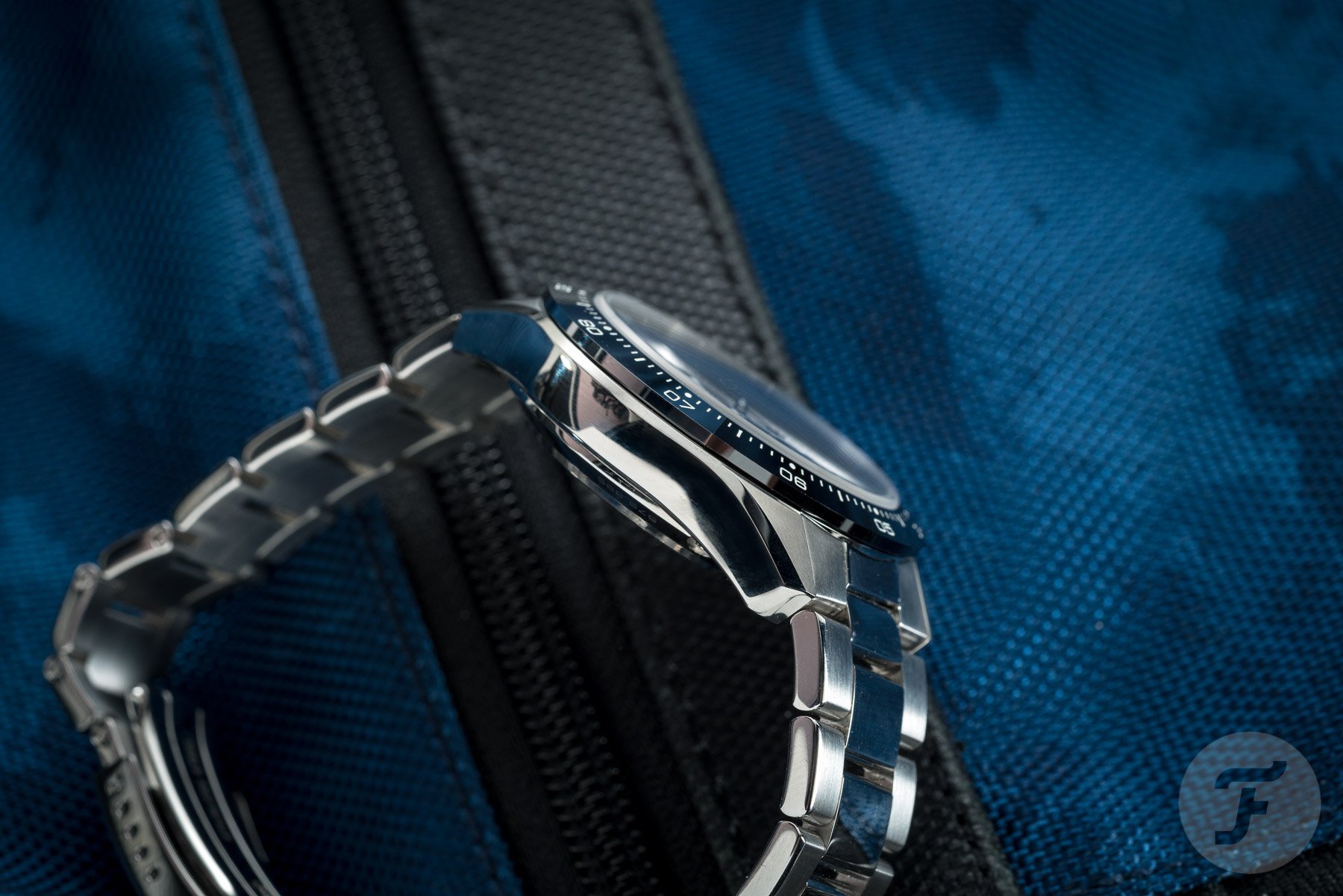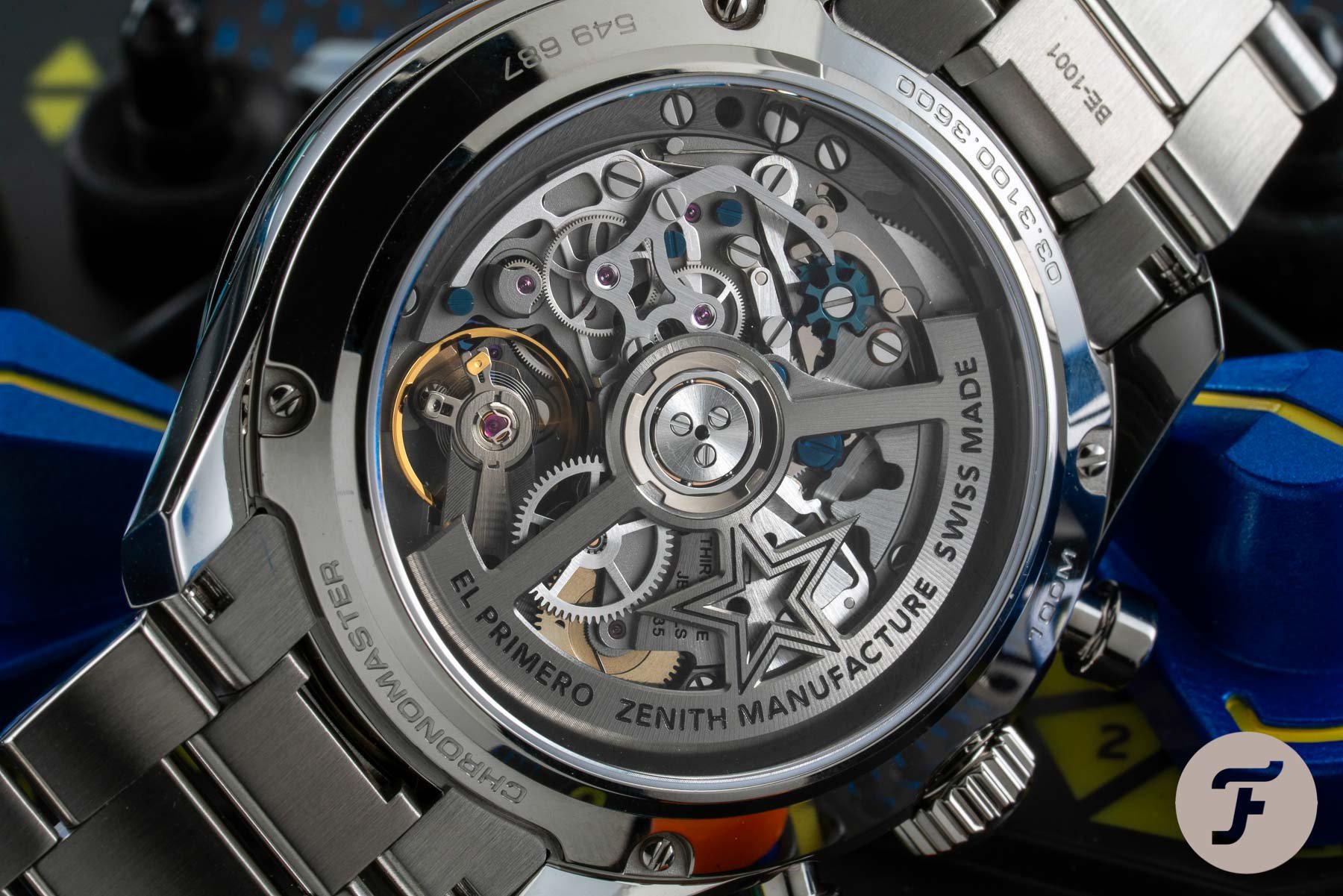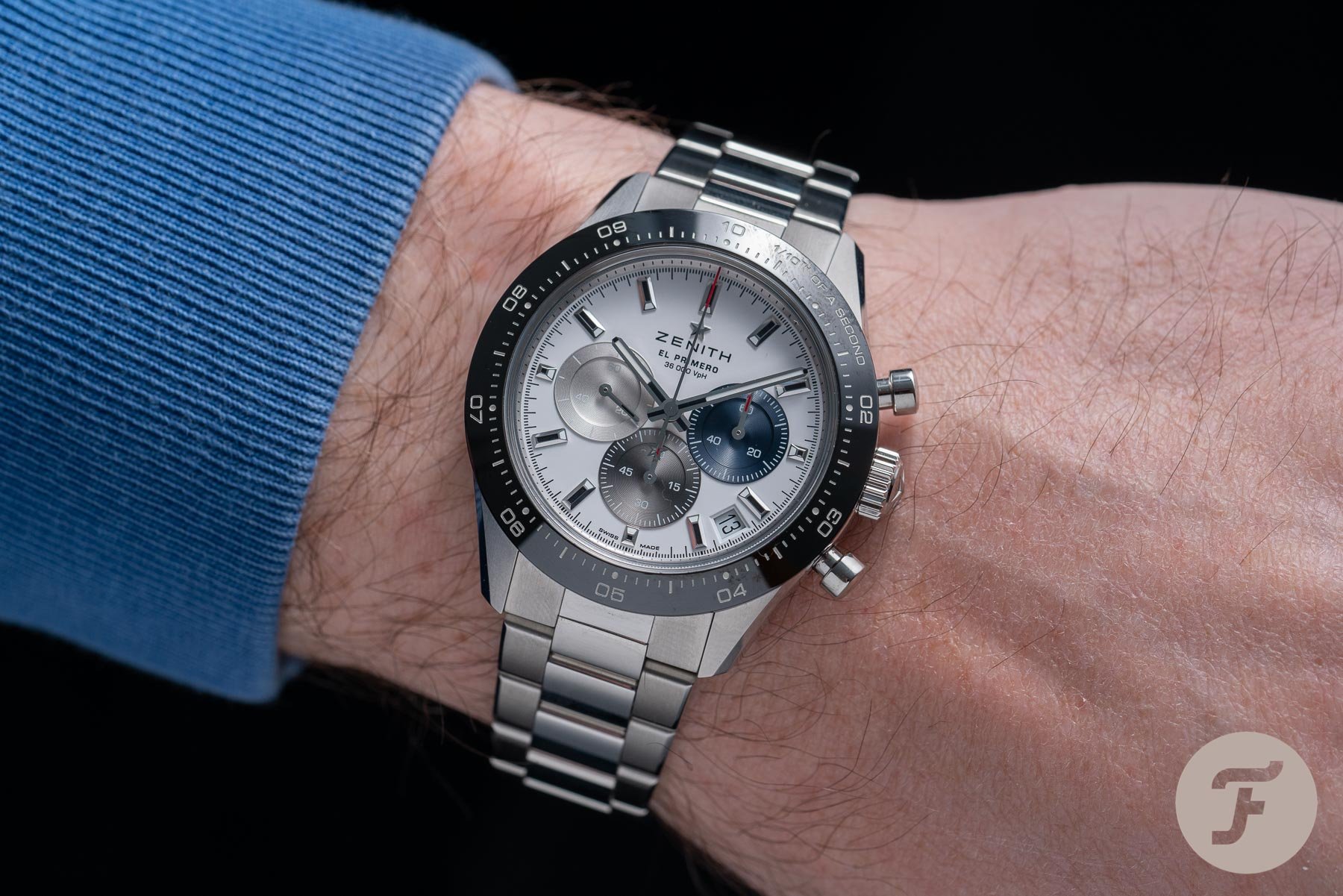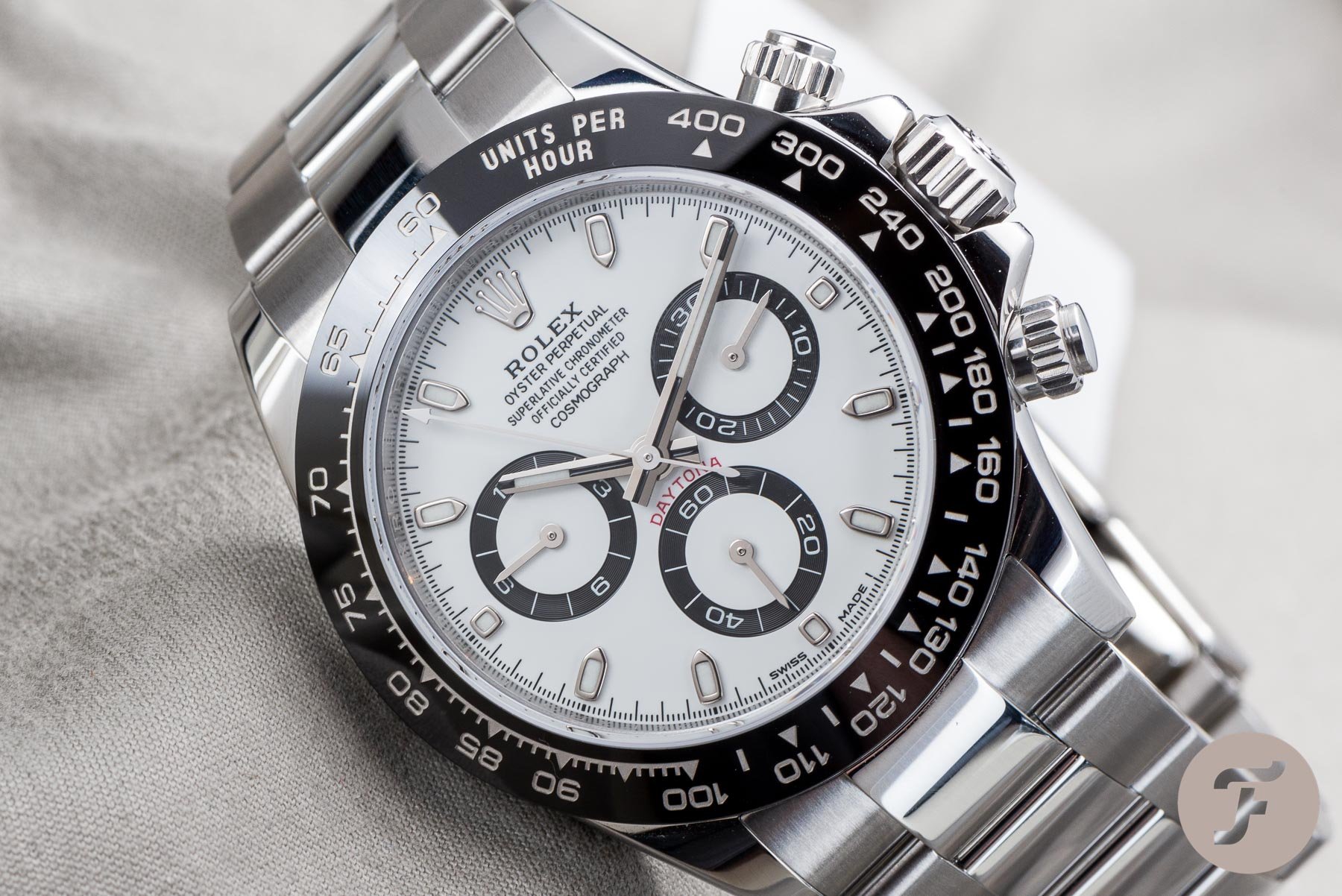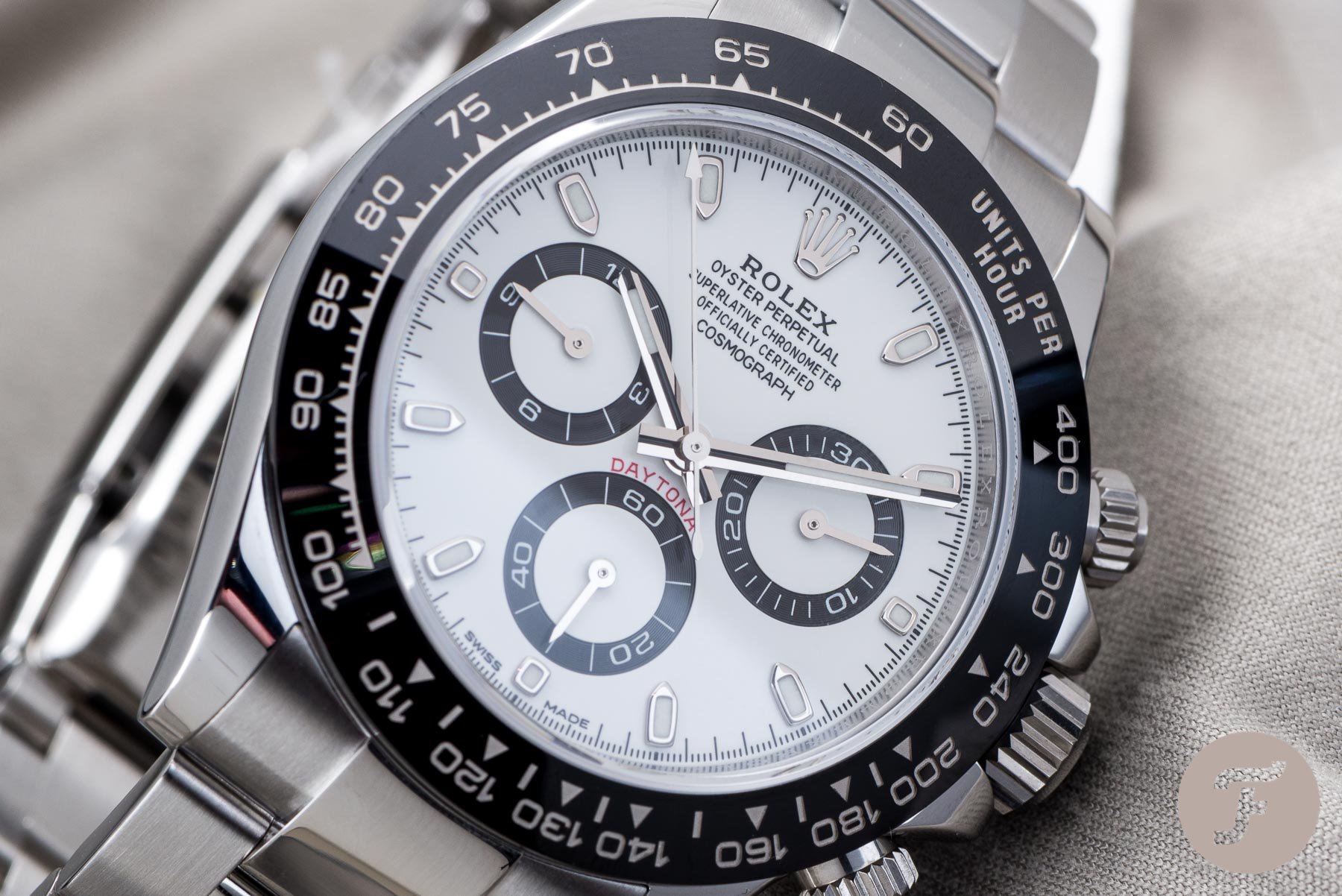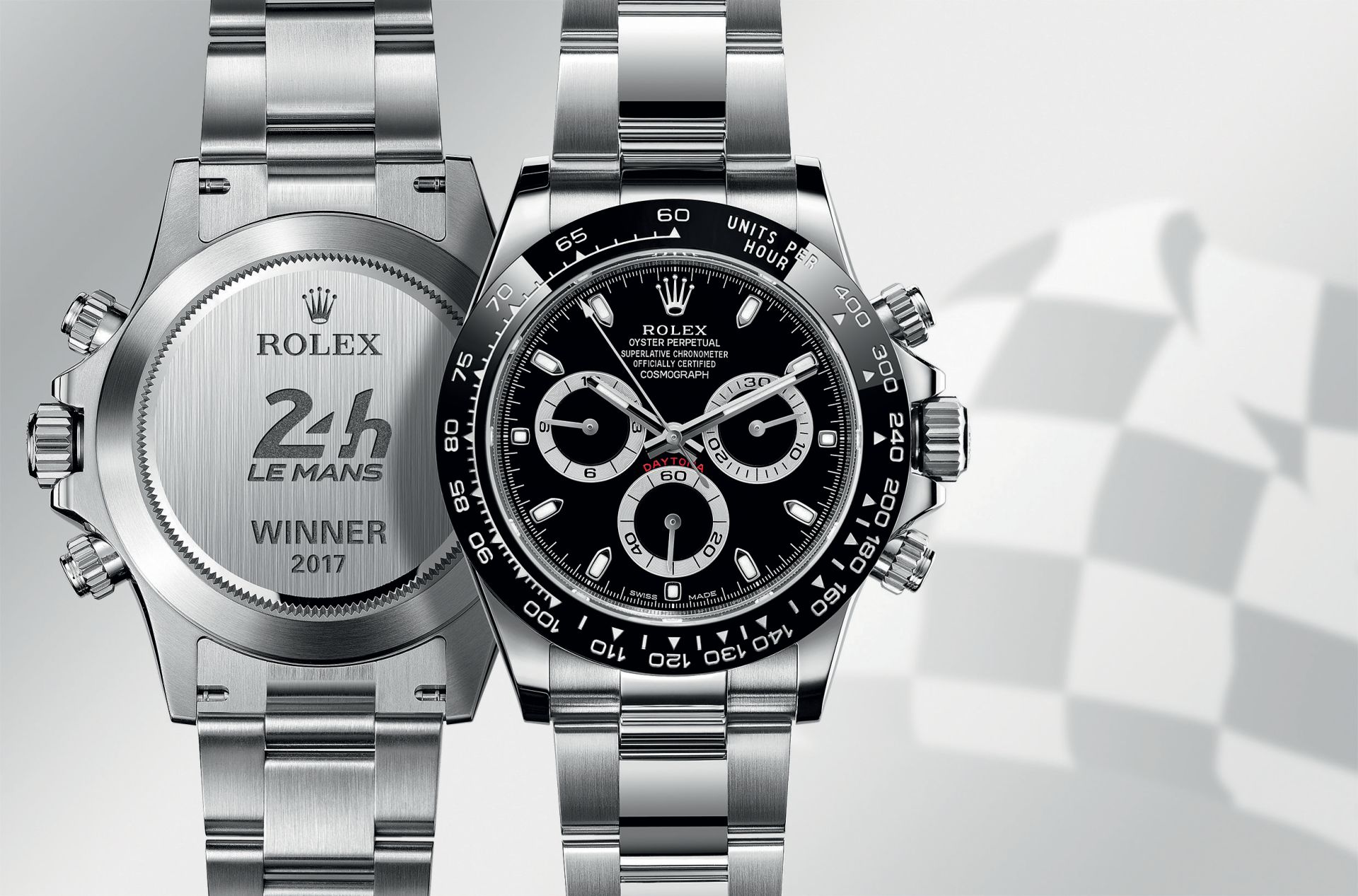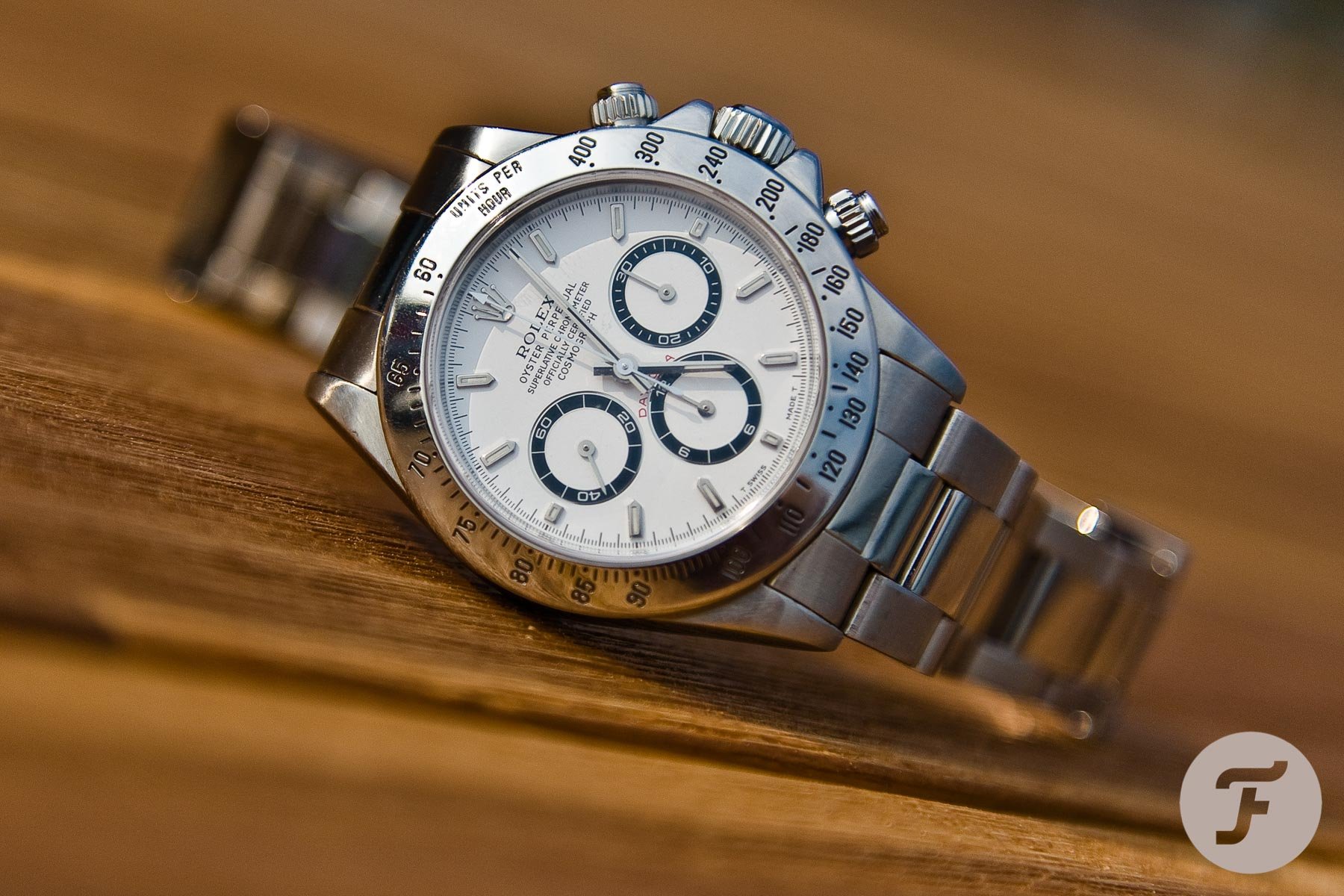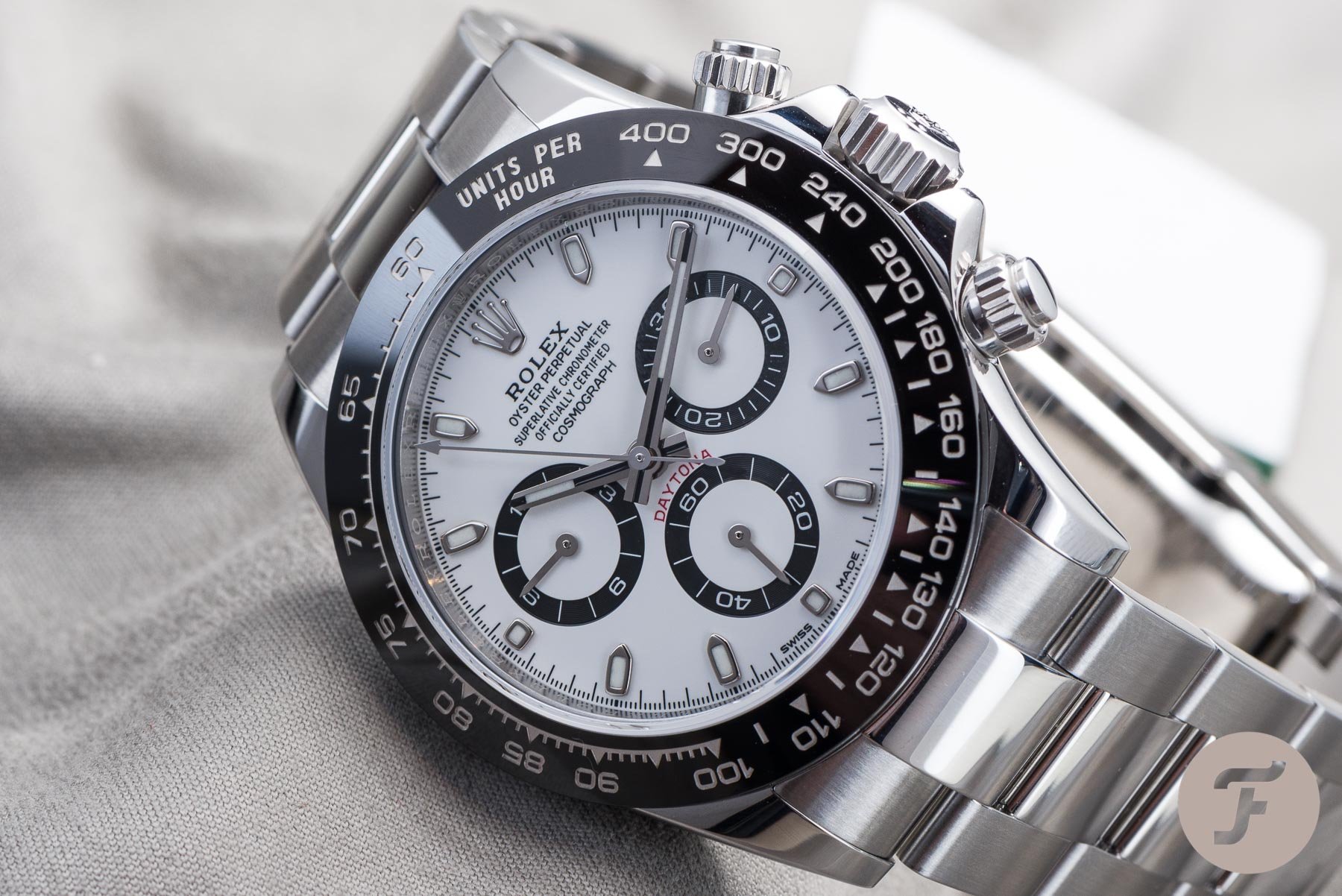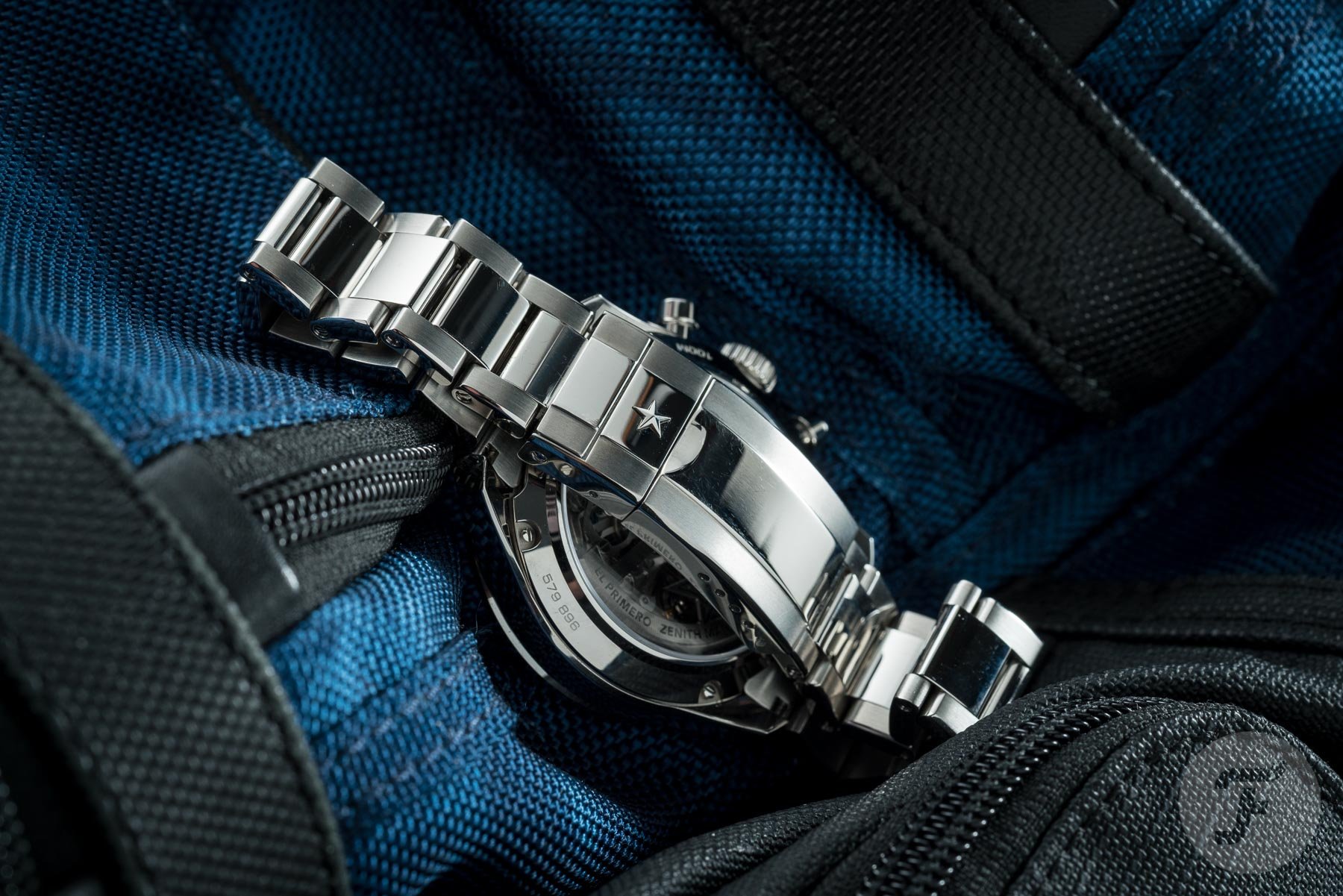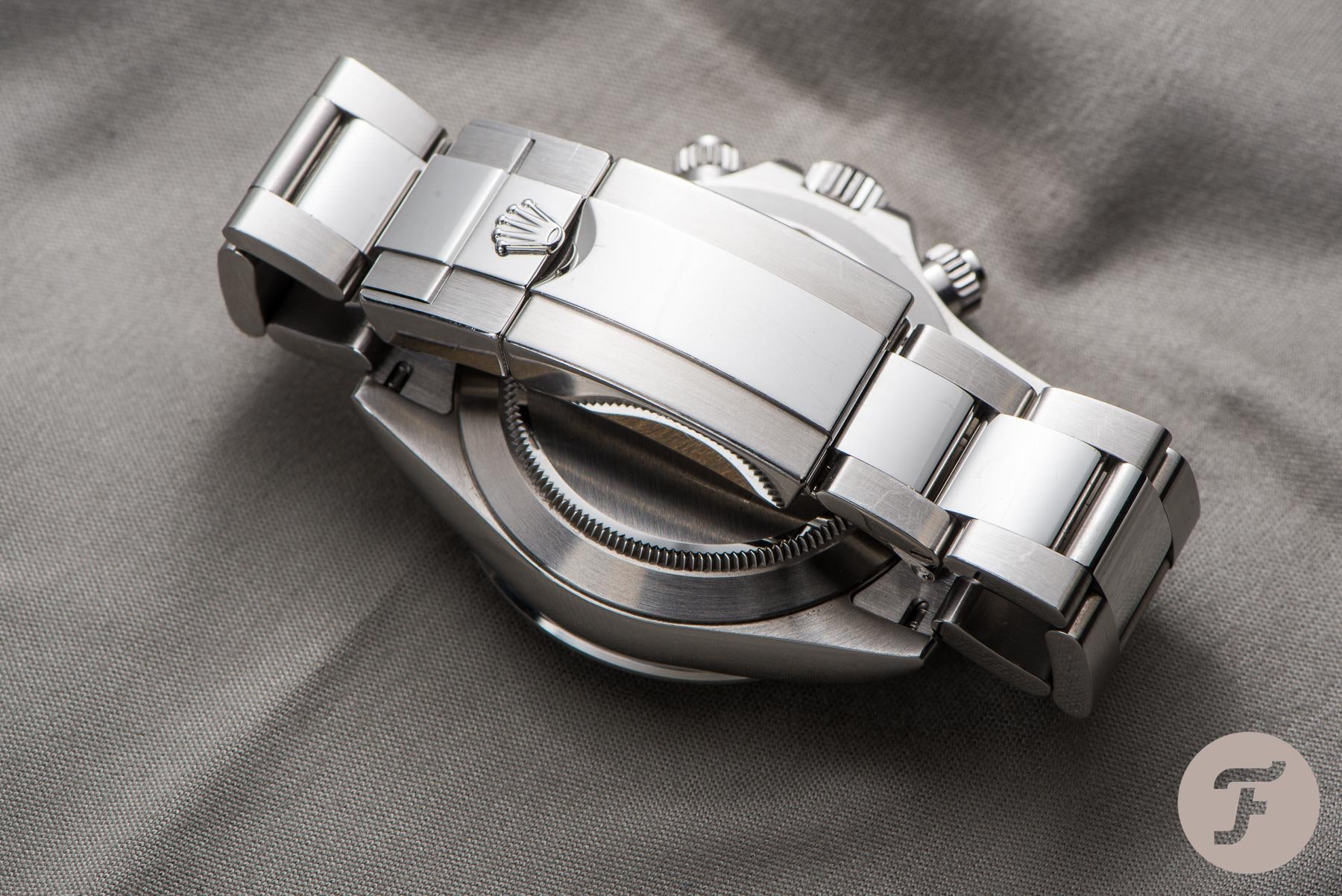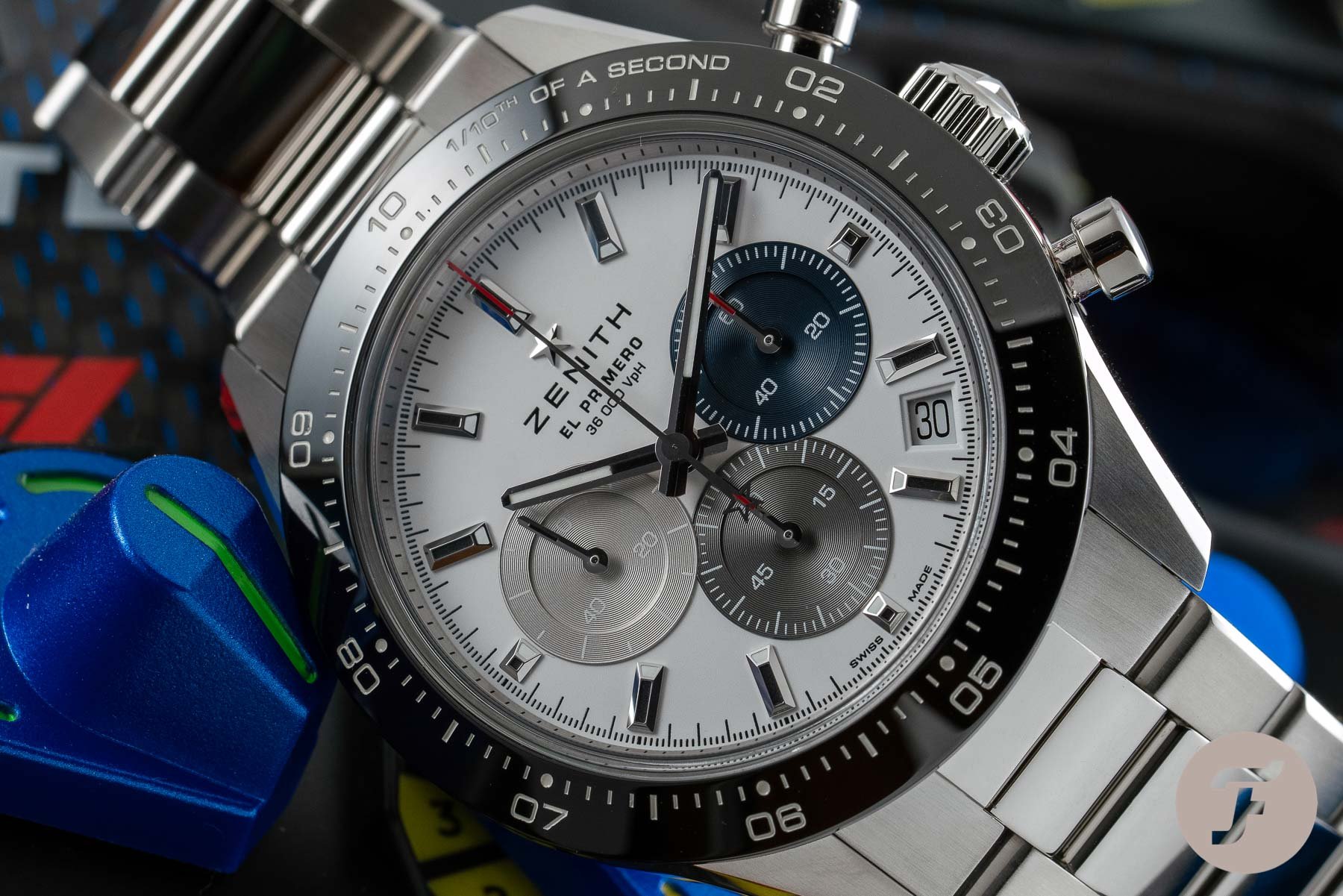Sunday Morning Showdown: Rival Racers — Zenith Chronomaster Sport Vs. Rolex Cosmograph Daytona
For some around the world, Sunday morning is about resting. But here at Fratello, there’s no rest for the wicked. We take one or multiple watches into the Showdown arena to sing with praise or sneer with cynicism for this series. Today, we look at the Rolex Cosmograph Daytona against its classic yet contemporary counterpart, the Zenith Chronomaster Sport. First impressions deem the Chronomaster Sport has an uncanny resemblance to the Daytona. However, a keen eye will notice these watches are far more distinct than they initially appear. With two writers at the ready, we dig deeper into the details and see once and for all which chronograph has the upper hand. It’s your vote, however, that makes the difference, so be sure to select your choice at the end and make your opinion known in the comments.
As with most Rolex watches, design evolution can be subtle and iterative with few generational jumps. The most dramatic shift for the Daytona racing chronograph came in 1988 when it received an automatic movement. Rolex was late to the party when it came to automatic chronograph movements, as the consortium of efforts achieved the feat already in 1969. Like with the early adoption of new computer technology, it pays to wait while the new solutions are stress-tested before acceptance. Compare the original iPhone to the iPhone 4, and the features and functions are like night and day. The same can be said with the Daytona, which ironically adopted the El Primero movement from Zenith. This mechanism drove the updated aesthetic for the Daytona, which remains mostly in place to this day.
Rival racers
With the beefed-up 40mm Oyster case and screw-down pushers flanked by crown guards, the Daytona took a revolutionary leap from the manual-winding 37mm reference 6265. The genesis of the Daytona begins with reference 6239, but it’s the reference 16520 from 1988 that’s the origin of the world’s most sought-after steel chronograph. Conversely, the Zenith El Primero watch of the time quickly lost traction as the leading force of desirability. For 2021, Zenith placed its iconic tri-color sub-dials and El Primero movement within a case suspiciously following the lines and bracelet pattern of the Daytona. While round watch cases with chronograph pushers are nothing new, Zenith’s implementation of the ceramic 1/10th of a second bezel and Oyster-style bracelet raised some eyebrows.
First, last week’s winner
It’s no surprise the watch world went into overdrive with heated discussion about the resemblance. But the defenders dutifully backed the history and importance of the Zenith and pointed out the notable differences. While immediate comparisons have subsided a year after release, the debate about which watch is better rages on. Why argue when the Daytona delivers to a customer precisely as the planets align? Speaking of questionable resemblance to Rolex models, last week saw Brandon and RJ take the reins in their respective golden chariots at the Tudor Hippodrome. RJ made a strong case for the individualistic nature of the Tudor Black Bay GMT S&G. Brandon lamented the missed opportunity to reflect the authentic Rolex “Root Beer”. However, the Tudor Black Bay S&G still fizzed to a well-deserved “rate it” with 64% of the votes. Let’s see how Jorg and Ben get on today. For clarity, Jorg backs the Zenith while Ben props up the Rolex.
Jorg — Zenith El Primero Chronomaster Sport
Last week’s Showdown sparked an interesting discussion. How far can Tudor go in “drawing inspiration” from its bigger brother? While the connection between Zenith and Rolex is not direct, the two brands do crossover in the history of the Rolex Daytona. As mentioned in the intro, Zenith provided Rolex with its high-frequency El Primero movement for 1988’s first automatic Daytona reference 16520. Albeit, the resulting caliber 4030 was significantly detuned to stretch service intervals. Even so, with a bulk order from Rolex and a sprinkle of brand cachet, Zenith regained its glory and centered the messaging around El Primero’s legacy. While you won’t hear it from PR teams, Rolex inadvertently gave Zenith the boost it needed to keep going and thrive, especially with today’s subject, the Chronomaster Sport.
However, there is more to this story than just the El Primero. In my series of Buying Guides, I brought up a unique series of Zenith watches created by a select group of goldsmiths from Bologna, Italy. These Zenith Bolognese El Primero Chronographs, also known as the “06s”, saw production from the mid-’80s until the early ’90s. Among them, you will find gold sports chronographs that look very familiar. There’s a resemblance to the Daytona’s bulkier 4030 design, which was in its infancy in the late ’80s. But it also shows a clear lineage to 2021’s Chronomaster Sport. So, before you start shouting “copycat,” Ben, here’s the proof Zenith was already sporting this look even before the venerable Daytona.
Ben: Good find, Jorg. Although I find the resemblance tenuous at best, I’m willing to concede that Zenith used its back catalog as inspiration. When it comes to the Oyster-style bracelet and clasp, I begin to question it, but I will let you finish.
Zenith drawing from its past
Jorg: I was just like you, Ben, and so many others in early 2021. My immediate reaction to the Chronomaster Sport was the uncomfortable notion of Zenith piggy-backing on a seriously hot (market-wise) timepiece. Many referred to it as the “Zaytona”, even when Zenith drew our attention to three heritage models as the influences that combined to form the Chronomaster Sport. Yet, after my first impressions dissipated, I no longer saw the likeness. And the reason? I wouldn’t say that I like the Rolex Daytona. It is not necessarily the timekeeping hunk of metal itself that irks me the most, but the noise around it and constant comparisons with any chronograph. Still, if we are talking specific models, a white-dial steel Daytona leaves me colder than a well digger’s posterior. I might be getting personal now, as I know you own the same white-dial steel Daytona that I detest. But by keeping the Daytona under lock and key in my brain, I could see the Zenith in its unfettered form.
Ben: That cut deep, Jorg. Deep as a well, in fact.
Jorg: Sure, the black Cerachrom bezel of the Daytona reference 116500LN was an innovative addition for Zenith, but it’s still nothing new in the watch world. So, Zenith including it on the Chronomaster Sport is a logical step forward. What you also get with the Zenith is regular pump pushers instead of fussy screw-down finger traps. Along with the latter comes the awkward sub-dial placement on the latest Rolex-powered Daytona. The biggest irony is that the Zenith-powered Daytona had visually balanced sub-dials in line with the center pinion. To add more imbalance to the Daytona are the excessive lines of text on the upper part of the dial. There’s a lot I don’t like about the Daytona, so much so that I find comparisons to the Zenith almost insulting. While the madness prevents me from acquiring one, even the Daytona’s list price of €13,550 is too much to consider.
Zenith attraction
My sentiment towards Zenith is entirely different. The brand is on a path that I can get on board with. Zenith gives the enthusiasts lovingly recreated versions of El Primero classics and future-forward technical marvels. At first, I felt the Chronomaster Sport sat in between these pillars. I now see, however, that the Chronomaster Sport is a gateway for the casual audience to experience Zenith’s brilliance.
Upon seeing the production watch in our office, the 41mm case immediately felt far more robust than the slender 40mm Daytona. I attribute this to the solid lugs that feel modern and protruding pump pushers that are better for a sports chronograph. Additionally, the finishing of the watch with a mixture of polished and brushed surfaces adds contrast and flair. Then there is the iconic dial layout, which takes inspiration from the legendary El Primero A386. The iconic tri-color sub-dials give it a distinct Zenith look but also aid in distinguishing each indication. The El Primero caliber 3600 greets you as you flip the Chronomaster Sport over. Operating at a high-beat frequency, the 3600 also provides 60 hours of power reserve. The beauty of this caliber shines best when observing the central chronograph hand traversing a complete cycle in ten seconds. Having the high-contrast black ceramic bezel makes even more sense when you can calculate 1/10th of a second.
There is only one reason to want a Daytona
After wearing the Chronomaster Sport, you soon realize its distance from the Daytona. The aesthetics and the movement are firmly rooted in Zenith’s eclectic history. With a list price under €10,000 and a higher prospect of owning one within a year of wanting one, the Chronomaster Sport is a far more tantalizing offer.
Maybe the Daytona is still your dream watch, but when hunting north of €35K for a pre-owned example, you must question how deep that lust really is. For me, my money would go to a distinct, historically relevant, and stylish chronograph. And if I have the cash to burn, I may stretch to the newly introduced rose gold Chronomaster Sport.
Ben — Rolex Cosmograph Daytona
You may already be a Daytona owner, or you may be wondering what the hype is all about. But a growing number of budding watch buyers consider the Rolex Daytona, even in utilitarian steel, as the ultimate grail. Once you own this watch, you know you’ve made it, and all other watches pale in comparison. It could also be the purchase that breaks the cycle and offers an exit route to pure ignorant bliss. Beyond the Daytona, no other wristwatch could provide greater satisfaction, and thus, collecting is rendered meaningless. Right? Well, take it from any Rolex Daytona owner out there: this is not an exit watch.
If anything, you’ll tumble further down the rabbit hole of collecting the next hype watch on the list. Let me guess, an Audemars Piguet Royal Oak 16202? Or a Patek Philippe Nautilus? Maybe you want to keep it within the Coronet and try your luck for a Rolex GMT-Master II. The point I’m making is that chasing hype watches is a fruitless endeavor. It could be the eternal high you’re looking for, but most likely, the desire for something new and shiny bubbles to the surface later on down the road. When looking at it like that, you could say the Rolex Daytona is like any other watch out there. And that’s true if all you see is the hype. But looking beyond its almost mythical status, the Daytona is a proportionally perfect, ergonomic, and high-quality timepiece.
It still beats a racing heart
I say that, yet I’m writing this with the Daytona currently sitting in a box unwound and unworn for a good few weeks. How can that be if I’m extolling all its merits simultaneously? Well, like a lot of watches, it’s dependent on my mood. Recently, I’ve gone hands-on with Oris’s yet-unannounced novelties for this year. One watch, in particular, has lit the flame in potentially becoming my next acquisition. Therefore, I’ve been rotating through my modest Oris collection to quell the desire and appreciate what I already have. In case you’re wondering, it’s not working. But at least it gives me quality time with some of my favorite watches, including the Oris Big Crown Pointer Date Fratello Edition.
As today is the Miami Grand Prix, and Rolex is the official Formula One timekeeper, the Daytona will end up on my wrist. While I wish I were there, seeing the likes of Jenson Button and Nico Rosberg on TV sporting the Daytona, I somehow feel connected to the F1 frenzy. Not only will the Rolex billboards be out in Miami, but only 400km up Florida’s east coast is Daytona Beach, the birthplace of NASCAR and the origins of the Rolex Daytona name. It could have easily become the Rolex “Le Mans” — another race for which Rolex is the title sponsor. There were even ads for the Rolex Cosmograph in 1963 that read, “This is the Rolex chronograph. It’s called Le Mans.”
Finding its feet
I’m glad Rolex went with the Daytona name, as it works better phonetically. The watch itself is also a well-refined tool, having nearly 60 years of continual development under its belt. As we said in the intro, the major shift to automatic chronographs in 1988 brought about a wave of new features. I gave a breakdown of its design evolution here, but it could be argued that it’s barely changed in appearance since the late ’80s. In a way, I appreciate the familiarity of this case design and its staunch opposition to conforming to trends. Under the hood, the story is quite different. Zenith did supply El Primero movements to Rolex for twelve years starting in 1988. However, as soon as the calibers landed with Rolex, they were detuned from 5Hz to 4Hz. Only 50% of the original Zenith El Primero parts remained, as Brandon mentions here.
When the in-house caliber 4130 launched in the new millennium, the Daytona’s design evolved again. Jorg called it out already, but the sub-dials shifted north of the center. In my view, I prefer when the movement dictates the placement of functions instead of compromising. The best improvement is migrating the subsidiary seconds to 6 o’clock. This shift lets you read the time of day on the vertical axis, while the chronograph elapsed time is on the horizontal axis. The El Primero and Speedmaster could learn a lot from this! Adding the Cerachrom bezel in 2016 was then the cherry on top that elevated the Daytona to its best form. While the steel bezel has a more traditional look, the scratch resistance of the pronounced ceramic bezel is too practical to resist.
Daytona Vs. Zaytona
I get why people are hung up on the screw-down pushers. It is tough to unscrew both pushers in a pinch when timing at short notice. However, in my experience, if I know I aim to track an event and don’t plan on swimming at the same time, I leave the pushers unscrewed. It’s pretty simple and shouldn’t be too difficult to fathom. But I’ve had this fight with dear old Jorg many times before, and I’m willing to concede that the pump-style pushers are perhaps more accessible. What I won’t back down on is the new Zenith Chronomaster Sport bracelet. Did Zenith take tracing paper to a Rolex clasp and call it a day? I’ve been hands-on with the same watch, Jorg, and I have to be honest, I’m not impressed.
The dial layout is very reminiscent of earlier El Primero models, which I like. And while the 1/10th-of-a-second timing is highly impractical, it’s mesmerizing to observe the hand spinning so fast around the dial. Nevertheless, the bracelet is horrendous. Not just the clasp but also the way the links articulate too freely as if it’s been worn tight for 30 years and the links have stretched. The tolerances and level of refinement on the Daytona far outshine Zenith’s Wish.com knock-off. Jorg has helped me disassociate the Zenith El Primero Chronomaster Sport’s case and dial from the Daytona. But in the race of champions, the Rolex Cosmograph Daytona is still the winner.
Final lap
Jorg: I know we should refrain from talking market prices, but it’s hard not to when it comes to the Daytona. This watch is at the epicenter of the Rolex craziness. Rather than attract intrigue, it’s mocking the industry and becoming the symbol of hype around the Crown. Add those wild prices to a watch that I don’t like, and I cannot muster up many positive thoughts.
Ben: That’s true, Jorg, and the expanding Rolex bubble is unavoidable. But think, the previous reference 116520 was the original hype Rolex. Now, it’s the 116500LN. Tastes change, and hype dissipates. But with the Daytona, the core design remains strong, so much so that other brands are riding its coattails.
But what do you think, dear readers? Are you Team Star for Zenith? Or are you Team Crown for Rolex? Get voting, and let us know why in the comments below!

